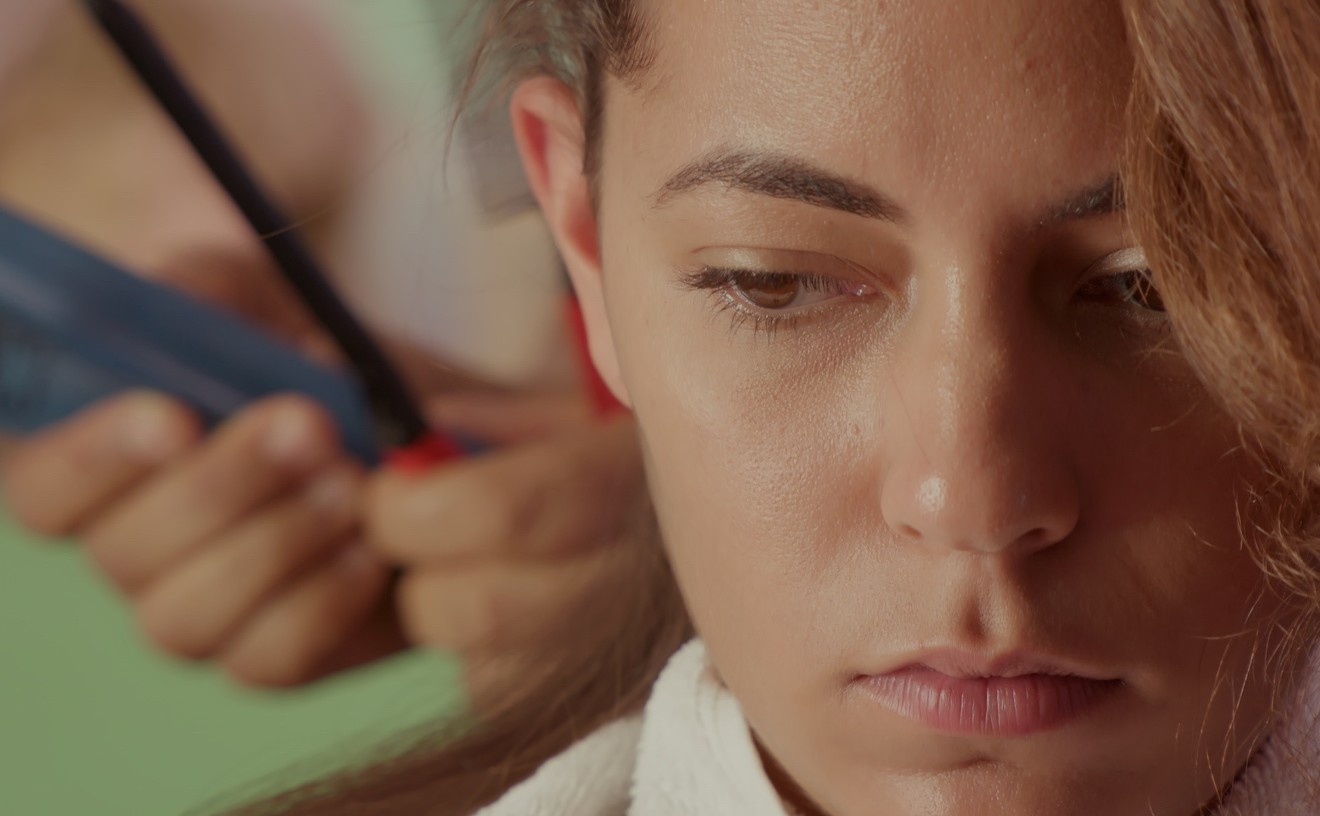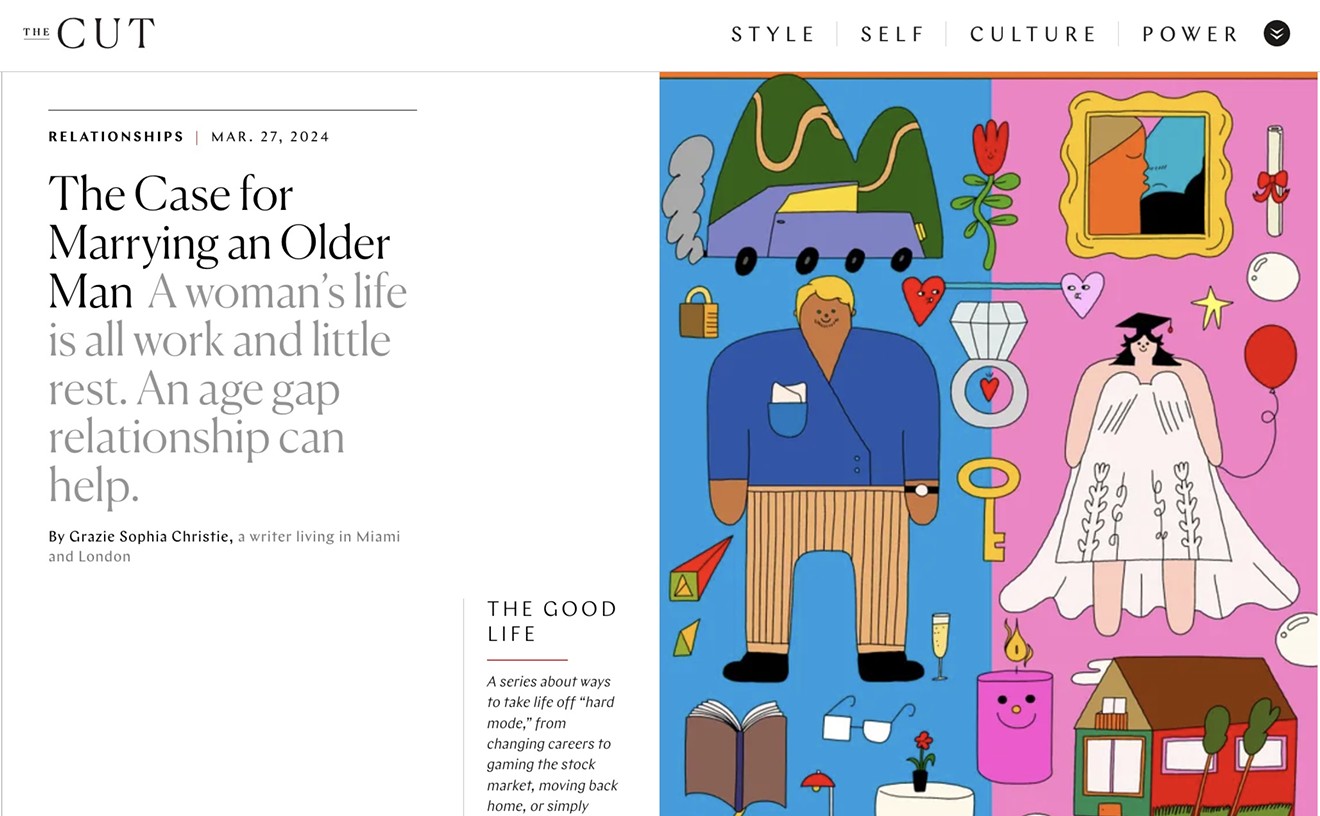Serrano visited Miami recently to attend the opening of a ten-year retrospective of his work at the Center for the Fine Arts. Andres Serrano: Works, 1983-1993, on view through July 30, includes the artist's softly lighted portrait photographs of the homeless, the clergy, and the dead; abstract photographic compositions made with blood, semen, and urine; sexy closeups of guns; dramatic photographs of quasi-religious tableaux; and photographs from his immersion series, featuring Serrano's controversial Piss Christ, which shows a plastic crucifix submerged in a container of urine.
Serrano's best-known work to date, Piss Christ engendered a furor when it came to public attention. The firestorm began in 1989 with a letter to the editor in a Richmond newspaper protesting its exhibition in the Virginia Museum of Fine Arts; it culminated not long afterward in a Congressional debate. The religious right's outrage over Piss Christ fueled arguments for cutting federal funds to the National Endowment for the Arts, and led to the passage of the Helms Amendment, a measure that barred giving tax dollars to support materials that could be deemed "obscene" or "lacking serious literary, artistic, political, or scientific value." (For detailed coverage of the Piss Christ case, read Arresting Images: Impolitic Art and Uncivil Actions, Steven C. Dubin's excellent study of art and politics in the U.S. from 1988 to 1992.) In these Contract With America times, Sen. Jesse Helms and others continue to cite Serrano as a reason for abolishing public funding for the arts altogether.
A sublime image with a dirty name, Piss Christ, like much of Serrano's work, questions Western society's taboos about the body; but it also deconstructs our contemporary belief systems and corresponding structures of power. Serrano confronts us with our own contradictions by framing what we deem unacceptable within a widely accepted format. To accomplish this, he uses large Cibachrome prints, which have the same seamless, glossy surface as upscale magazine advertisements or billboards. Their seductive beauty sets us up for the realization that, upon reading the works' titles, what we see is urine or semen or blood, and not paint; and that on closer inspection, the subject of a photo is a mutilated cadaver or a sensually posed nun. Questioning the definitions of the sacred and the profane, Serrano delights in upending the conventional concepts of man and God, body and belief, insider and outsider.
"Rather than seeking out to destroy icons, I'm just making new ones for myself," Serrano explains to the South Florida Art Center artists during an informal discussion the day after the CFA exhibition opened. "I'm always really amazed at how the work engages people." The 44-year-old artist speaks with a heavy Brooklyn accent, and wears his thick black hair cut in a high fade.
When someone asks if he purposefully positioned himself as an art-world enfant terrible, he laughs, saying, "That sort of provocation can't be strategic, it just sort of happens. I just feel that you have to stand your ground as an artist, and do what you want to do. I've always felt I had to make my own way."
Serrano grew up in an Italian neighborhood in Brooklyn with his Afro-Cuban mother, his Honduran father having left the family when the artist was still a child. A high school dropout, Serrano made frequent visits to the Metropolitan Museum of Art, and at age seventeen attended classes at the Brooklyn Museum of Art School. By age twenty he had become a drug addict and a dealer. Eight years later he kicked his habit and returned to making art.
Although Serrano had painted as a teenager, he found he was more comfortable with photography after experimenting with a girlfriend's camera. He now likes to refer to himself as "an artist with a camera" rather than as a photographer. In the early Eighties, Serrano and his wife, Julie Ault, became closely associated with the artists' collective Group Material, which promoted the making of social and political art directly involving the community, independent of art institutions. Unlike other members of the group, Serrano maintains that beauty is an essential part of art, whatever its sociopolitical function.
The earliest works on display at the CFA are part of a series of contrived tableaux that Serrano put together with live models, ecclesiastical props, and raw meat. One such photo, Heaven and Hell, features the artist Leon Golub posing in a red cardinal's outfit, and a young woman naked to the waist with her wrists bound together, animal blood dripping down her torso. Serrano acknowledges the influence of Spanish film director Luis Bunuel, and nowhere is it more evident than in the surreal, sacrilegious absurdity of these early images. But these takes on classic religious pictorial themes seem obvious when viewed next to the the artist's more evocative later endeavors.
Take Serrano's mid-Eighties experiments with body fluids. These works include a series of abstract color fields -- photos of square or cylindrical Plexiglas containers filled with milk and blood. Urine added another color to his spectrum. The photos in his Ejaculate in Trajectory series capture what look like beams of light or abstract splashes of paint jumping across a black background A in reality they are photographs of the artist's shooting sperm. The provocative titles of these works make clear Serrano's intended critique of the ideal of a modernist purity in art. "I want people to know that it's blood and piss, not paint," he emphasizes. Looking at these gorgeous, richly colored images, one can't deny that the life substances that we have defined as revolting are as beautiful as oil on canvas -- even more so.
Serrano began filling Plexiglas crosses with blood, photographing them from a low angle in order to make the images appear larger. With the immersion series, he created glowing ethereal images by placing plastic figures in urine. These include the Christ figure, but also Piss Discus (using a miniature statue of the classical Discus Thrower), Female Bust, and Rape of the Sabine Women. Serrano has explained that he wanted to restore a corporeal dignity to these commercialized religious and classical figures by bathing them in bodily fluids.
The artist's fascination with religious rituals and artifacts stems from his own childhood education as a confirmed Catholic. But Serrano contends that European films and the traditions of his Italian neighbors made a stronger impression on him than his family's Catholicism. He also points out that he does not necessarily identify with being Cuban, nor think of himself as Hispanic.
"I don't think that my work is particularly Hispanic," he observes. "Look at my ejaculations, for example -- there's nothing Hispanic about them."
In 1990 Serrano made a series of portraits of homeless people, setting up a portable studio in the street and shooting his subjects in dignified poses; in this way he has forced viewers to look the homeless in the eye. His next works focused on symbols of power: First, the dark-skinned Serrano convinced members of the Ku Klux Klan to pose for him (they called him Brother Serrano); then he took pictures that humanize priests and nuns. Next, in a series titled Objects of Desire -- voluptuous shots of various gun parts (barrel, trigger) -- Serrano presented a sexually suggestive meditation on violence.
His most recent photographic series included in the CFA exhibition depicts unidentified corpses in an unnamed city morgue. Rat Poison Suicide shows a woman in a modest white lace bra, her arms stiffly crossed after rigor mortis has set in. Both Knifed to Death I and Knifed to Death II focus on an outstretched hand in a classical pose, the fingers stained with ink from fingerprinting, the cuts on the arms from the coronor's incisions strangely resembling stigmata.
Serrano says that when he first entered the morgue, he saw a little girl on the table; an employee proceeded to split her open from chest to groin. "All of a sudden, her identity had been destroyed," recalls Serrano. "She was nothing but flesh. I realized that it doesn't look much different than animal flesh." The Morgue series, first shown at the Paula Cooper Gallery in New York, caused something of a brouhaha among that city's critics. Several panned the show, calling the work gratuitous. "Serrano seemed like he was selling death," wrote Bart de Baere in Flash Art magazine.
"Europeans, and even Canadians, have a more intellectual response to my work than Americans," Serrano responds. "They put it into an art historical context. Here, the work is not seen that way. There's a lot of critical hostility toward my work in this country...and the greatest hostility I've encountered is coming from the art world."
Serrano says he usually stays away from art world gatherings and rarely goes to galleries, preferring the movies. Music is a passion (the artist recently made a music video for the band Godflesh's song "Crush My Soul!"), and while in Miami he spent every night exploring South Beach clubs, dancing until the early morning hours.
The international acclaim that Serrano's work has garnered in the wake of Piss Christ has brought him prestigious gallery and museum shows in Europe, plus a market of high-profile collectors here and abroad eager to buy his art. But Serrano's work continues to provoke debate, inside and outside the art world, because it relentlessly raises questions about making art in this country in this moment in time.










